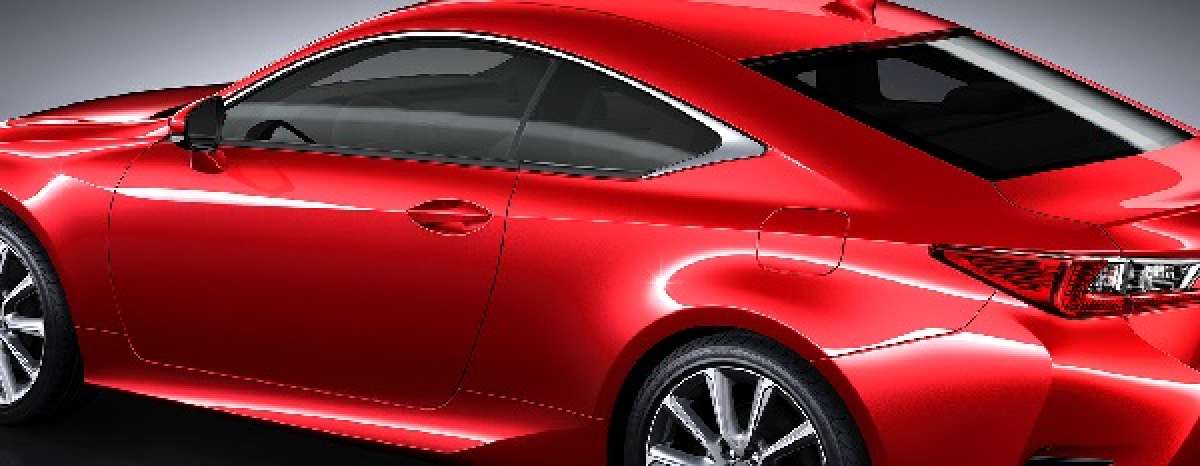The Supra is coming back. One of the most iconic nameplates in affordable sports car history will once again grace the rear hatch of a Toyota. We base this claim on Toyota having renewed the Supra trademark. Will the Supra be based on the new FT-1 concept, or the Lexus RC 350 sports coupe about to enter production? Let's break it down.
The Motor Report (TMR) gets the credit for noticing that the Supra Trademark application had been recently renewed. First applied in 1979, the name Supra was actually an evolution of the Celica Supra name. In 1979 Toyota took its popular Celica and upped the ante a bit. At that time in America if you wanted a reliable, premium, rear-drive sports coupe, with 4-wheel disk brakes, a fuel injected in-line six cylinder engine, and a 5 speed manual transmission your options were very limited. The Celica Supra offered that and more at a reasonable, and certainly affordable, price tag.
We’ll let the classic Asian sports car historians (both of them) argue over what car started the craze, but we credit the Toyota 2000GT (see video below). Like most affordable sports coupes the Supra was built off the platform of a much higher volume, lower specification, lower cost car. However, once it took hold the Celica and Supra parted ways and the Supra shared little with the Celica.
Starting in 1979 and only lasting three years, the first generation Supra was a fantastic car. I owned a near-perfect 1979 which was bought used (by my parents for me to commute to school) in 1984 with about 30,000 miles for just $2,000. It was derivative of the Celica and it was hard to spot unless one knew what to look for. A black side glass insert at the B-Pillar and a longer hood were the two give-aways. However, in terms of content it was Toyota’s top offering at that time in the USA.
In 1982 the Supra moved to the new Celica platform (still rear-drive at that time) and had the more modern angular wedge shape. The engine started to get better. It had now evolved to 2.9 liters and was now a dual-overhead cam design. The name was now just “Supra.” That car was Motor Trend’s “Import Car of the Year.”
The third generation bowed in 1986 and a half. It had a three liter engine and the look was now more mature. Squint at a third-gen Supra and you will see a BMW 850. In 1987 the first Supra Turbo was offered. This car was starting to approach near-super-car levels of performance, but was also at a crossroads. Would it be a sports car or grand touring car? The Supra was never really either, but always a bit of both. This generation is considered by many to be the glory years for Supra.
In 1993 the fourth (last) generation of the Supra began. Now very near to being a super-car the Supra still had an in-line six. However power from the factory was growing ever stronger. In 1996 for emissions reasons the six-speed manual was dropped for one model year (shame!). It came back though, and the car ran in turbo and non-turbo configurations until 1999. The Supra was often bumped up to over 1000 horsepower by tuners. If you’d like to see a bikini model speed-shift a 1050 HP Supra there may be a video of one... The car’s engine could manage the insane power. Being turbo-ready meant that adding boost allowed import tuners to simply leave the muscle car hot rod era in the dust.
As a former owner of an original Supra, follower of the car through its history, and current owner of Toyota’s closest current offering, the Lexus IS 350, this enthusiast is not impressed by the new Toyota FT-1. It looks cartoonish and the car seems to hint at hybrid-super-car marketing hype akin to the “always a year away” Acura NSX. If Toyota really wants to bring an achievable (affordable with sacrifice), rear-drive Supra to market its best option is the Lexus RC 350 platform. Rear drive, 6-cylinder, manual transmission, coupe body, relatively mass produced, it seems the obvious starting point for Toyota. De-content the interior a bit, offer the car without Nav (but with a double-DIN space in the dash like the Scion FR-S please) and the car might sell for under $40,000.
Now let’s dream a little. Let’s say Toyota does that. And now let’s also assume the Supra is offered with the new 2.0 liter turbo that is about to be released in the 2015 Lexus NX Turbo crossover. This could be a tuner-ready, rear drive car for sale under $ 35,000. Toyota has all the elements in place to bring back an affordable, or at least achievable, grand touring sports coupe to the US market. Or it could produce a cartoonish looking super car at prices out of reach of most. Time will tell.
Video credits shown when viewed.
Main image shows the Lexus RC 350 F-Sport cropped. Courtesy of Lexus.






Comments
I expect that the most
Permalink
I expect that the most "reachable" price could be in Corvette range but if the recent history of Japanese sports cars has taught us anything - it is that they are as expensive as they are impressive.
It's entirely possible that
Permalink
It's entirely possible that Toyota plans to do a more in-house version of the Toyobaru too.